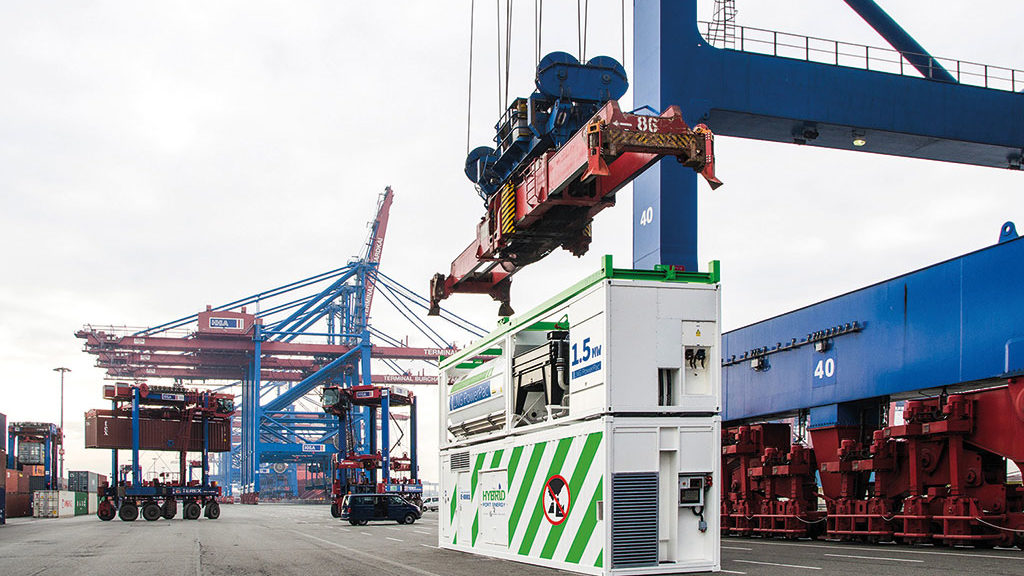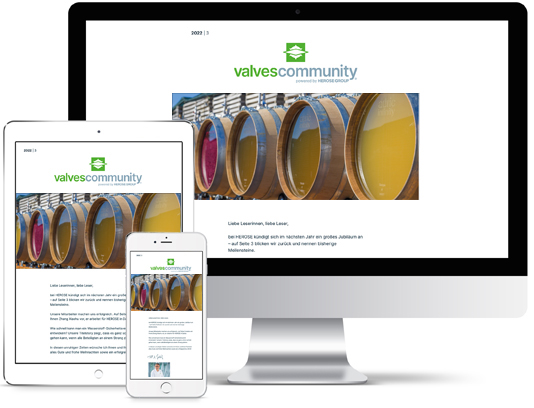With the LNG PowerPac® Becker Marine Systems has created a mobile solution for a low emission power supply that could be used world-wide. HEROSE participates on this project with several valves.
Hamburg takes another step to improve the air quality in the harbour. Innovative technology developed in the Hanseatic city can, in the future, ensure that large and very large container ships can switch off the so-called auxiliary diesel during the wait time, and obtain the electricity required for on-board operation from a novel mobile generator. In the scope of a common pilot project, Becker Marine Systems, Hapag-Lloyd AG and Hamburger Hafen und Logistik AG (HHLA) have been testing the novel technology since the beginning of the year.
LNG PowerPac®, a mobile power station
The technology supplier Becker Marine Systems has developed the mobile power station for this purpose. Two partners, Hapag-Lloyd and HHLA, then came for the trials. A so-called Becker LNG PowerPac®, the name of the concept, supplies container ships with environmentally generated power at the quayside of HHLA container terminal Burchardkai (CTB). The operation was tested several times successfully with 20,000 TEU giant container ships from Hapag-Lloyd over the past weeks using a prototype. Together with Hapag-Lloyd, HHLA is therefore increasing their efforts for keeping the air in Hamburg clean.
Becker Marine Systems is a customer of HEROSE for a long time. Valves from HEROSE were already installed in the Power Barge, that was built in 2015. The barge initially supplied a cruise liner with clean energy and now, it produces power and heat for various customers in the port of Hamburg. The PowerPacs® are fitted with pressure regulators, strainer, manual and pneumatically actuated shut-off, safety and check valves.
The Becker LNG PowerPac® has been developed together by Becker Marine Systems and their subsidiary HPE Hybrid Port Energy as compact system in the size of two 40 feet containers. This unit combines a gas-driven generator and an LNG tank that supplies the energy for the generator. As soon as the container ship has been moored, the 1.5 megawatt power station is raised from the quayside to a positioning place at the rear of the ship using a gantry crane, connected to the on-board network and can then provide power for operating the ships when in the harbour.
International potential
Thanks to the innovation, harmful pollutants such as sulphur dioxide, fine particulate matter and nitrogen oxide that are usually incurred from operation of the auxiliary diesel of the respective ship are either avoided completely or reduced significantly.
Dirk Lehmann, managing director of Becker Marine Systems, says: “The Becker LNG PowerPac® represents an uncomplicated solution for the reduction of pollution of harbours and has the potential to find its use internationally. We are currently conducting negotiations with diverse European as well as Chinese harbours and are confident that the Becker LNG PowerPac® can establish itself on the market.”
For the development of the new technology, the German Federal Ministry of Transport and Digital Infrastructure has approved subsidies at the amount of seven digits in the scope of the mobility and fuel strategy of the federal government. Enak Ferlemann, parliamentary state secretary of the Federal Minister for Transport and Digital Infrastructure: “The air pollution control in harbours of densely populated regions is of great significance. This is why we are promoting sustainable and alternative concepts as well as innovations such as the LNG PowerPacs®, which contribute to the modernisation of shipping and to reduce emissions.”
As Know-how partner and handling service provider, HHLA has been accompanying the project since its start in 2016. Hamburg‘s largest terminal operator has defined the technical and process requirements for the handling of the PowerPac®. HHLA Executive Board Jens Hansen says: “From our point of view, the test have been very successful until now.”
Photos: Carsten Wurr






 Read the current digital customer magazine now!
Read the current digital customer magazine now!
